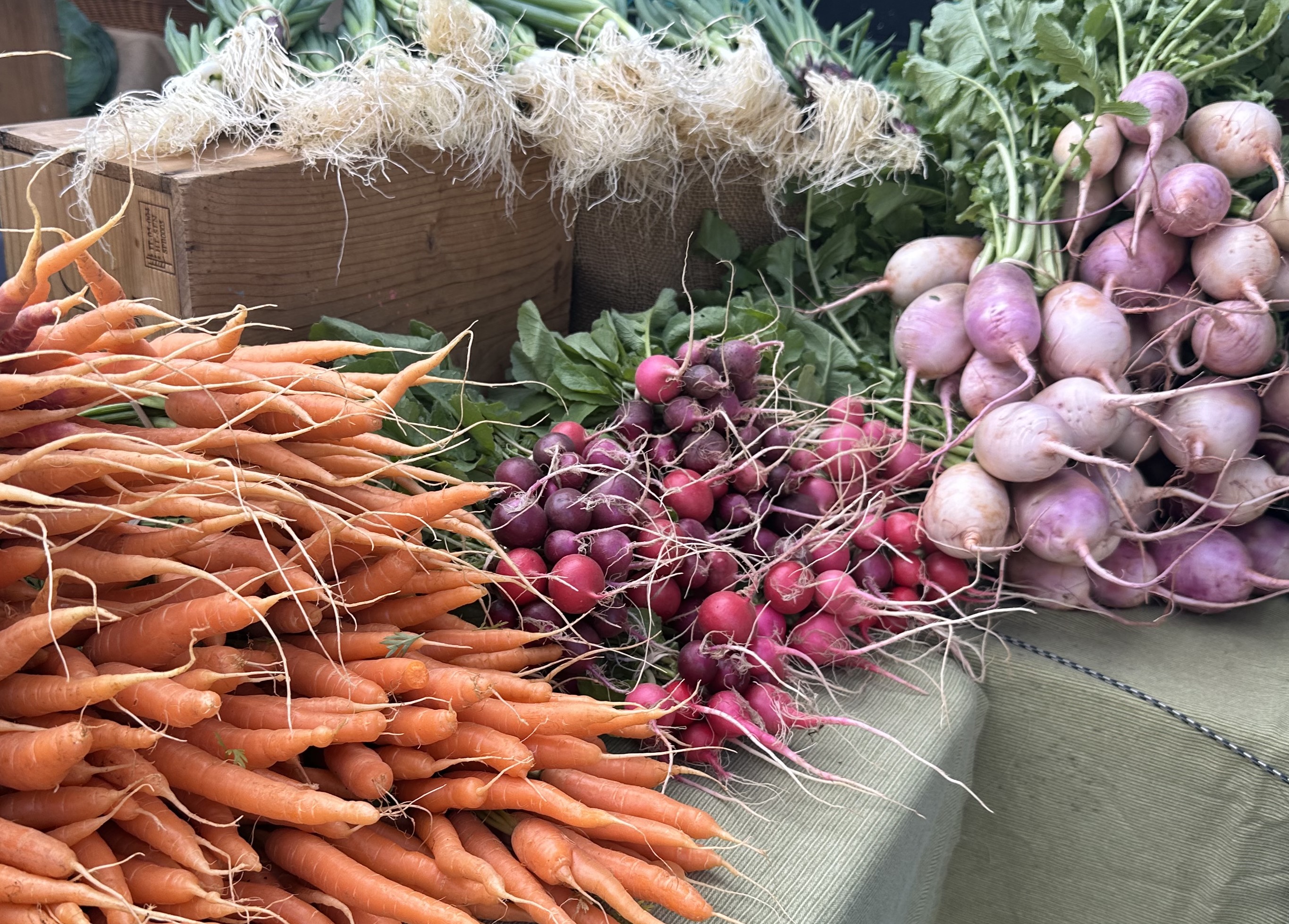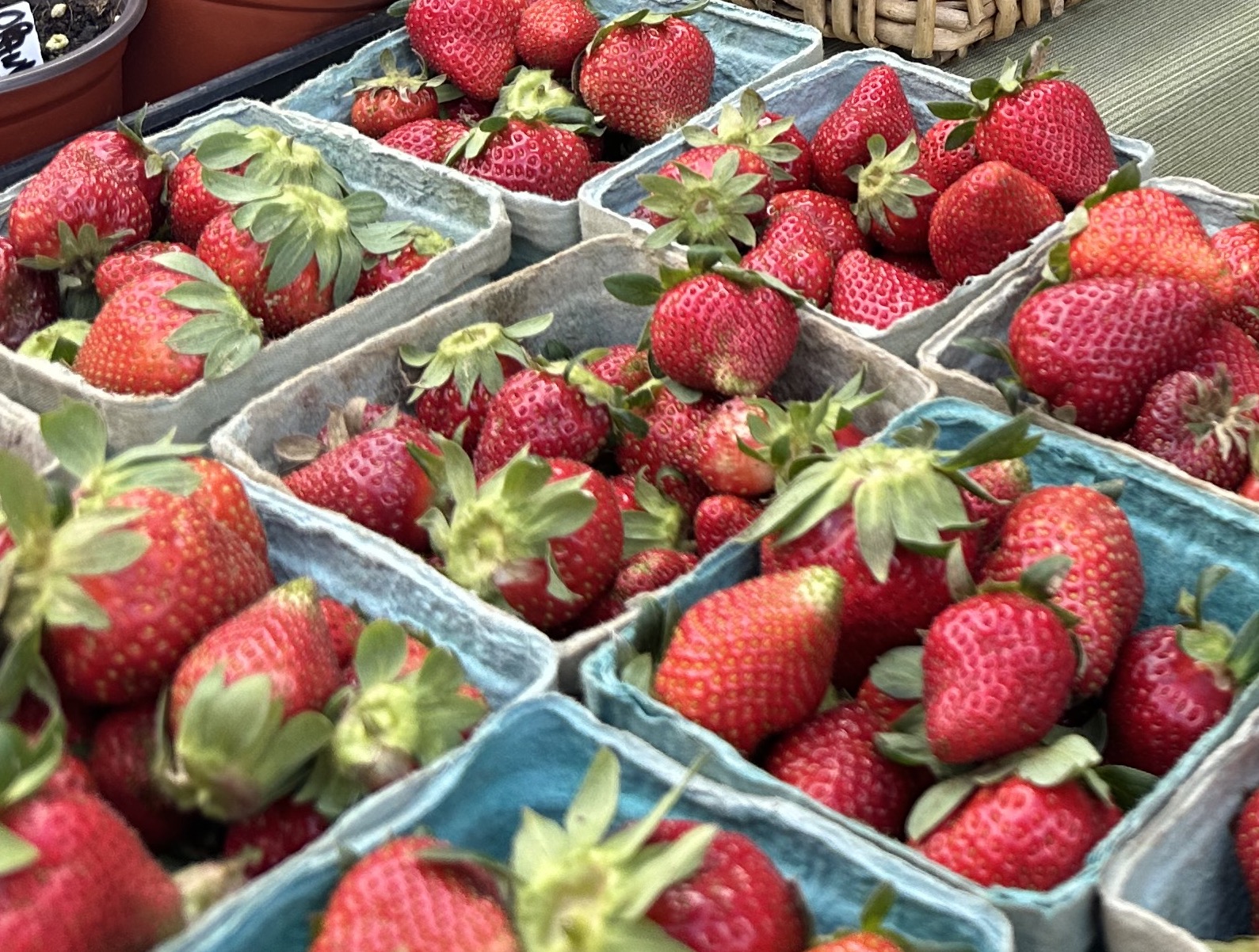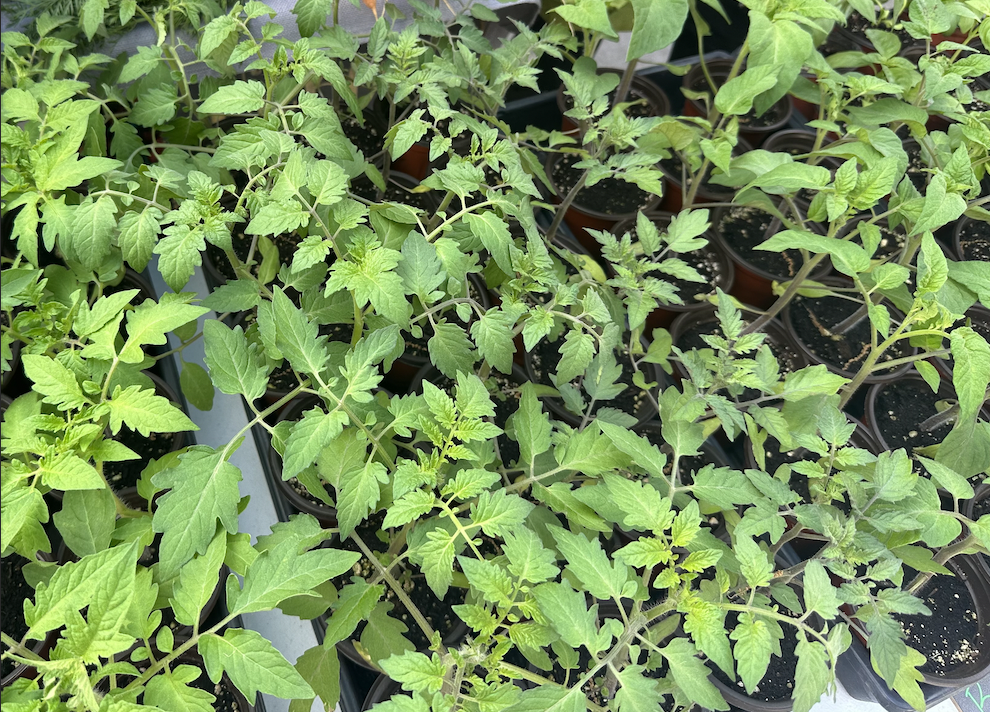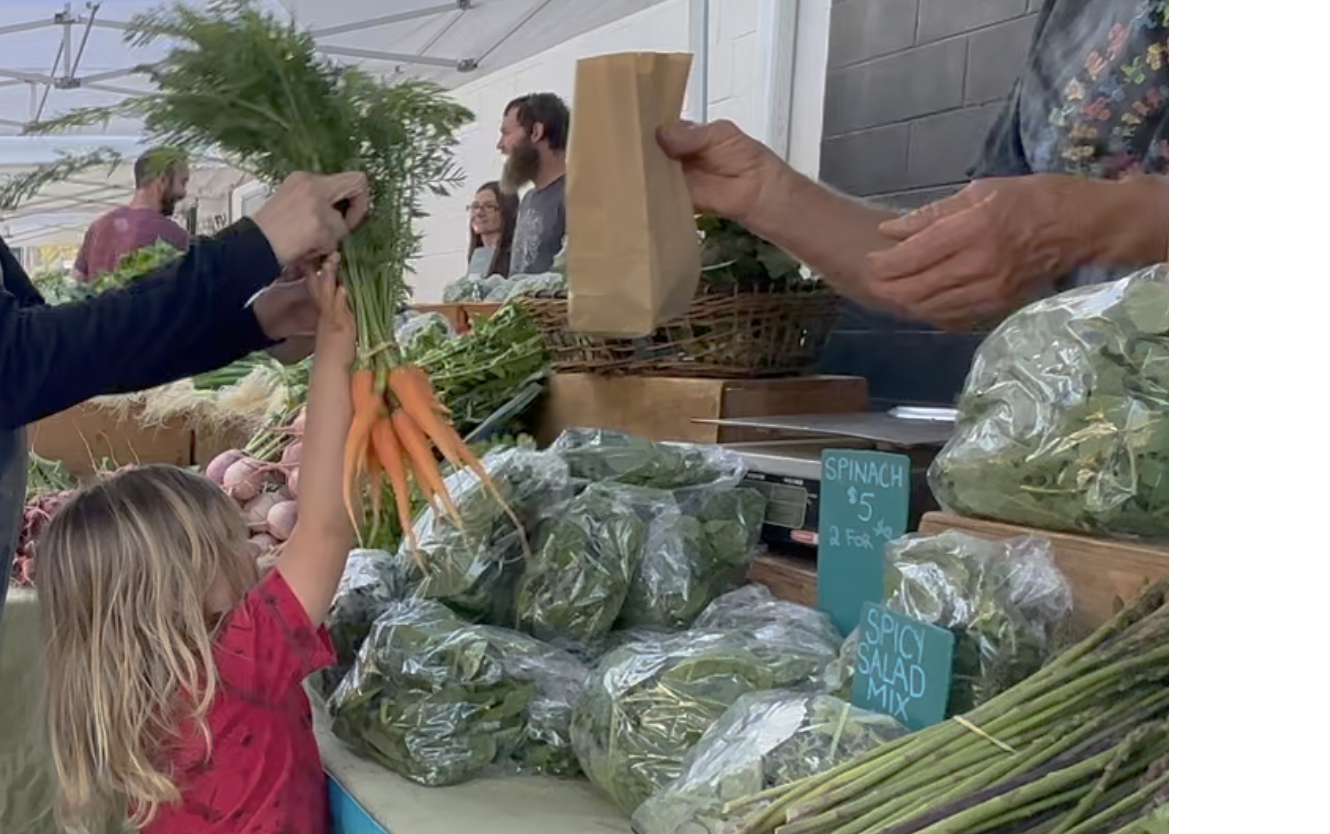In honor of the recently celebrated National Rainbow Day, we’re digging deeper into the colorful trope of the popular health tip “Eating the Rainbow,” and its emphasis on eating a variety of colorful produce to benefit your health.
However, shifts in modern-day agricultural practice often exploit the farms’ soil due to lack of crop rotation, overfarming, and increased pesticide and herbicide use have depleted many of the once-present vitamins, minerals, and other nutrients in these colorful foods.
So with mass-farmed produce now offering less nutritional benefit than their locally and sustainably grown counterparts, it’s very likely that consumers would be getting more nutrients from eating a narrower variety of local produce than eating a wider variety, across more of the color palette, of mass farmed foods.
So it begs the question, is it time to be over the rainbow?

Rules of the ‘Rainbow Road’ – Here’s What the Rainbow Diet Encourages
“Eating the rainbow” originated with an intent to reinforce the importance of building food choices around naturally colorful ingredients, such as fruits and vegetables, as part of a balanced and sustainable lifestyle.
The idea is backed by science that highlights the antioxidant phytonutrients unique to different colors of fruits and vegetables, with each carotenoid or flavonoid being responsible for the food’s color scheme.
These various carotenoids and flavonoids are linked to many health benefits and are proven to reduce the risk of disease. The idea is that through eating a variety of colors of foods, those focused on eating a colorful diet will easily consume their daily nutrients without having to focus specifically on minerals themselves or analyze each food choice to see if it the ingredient lives up to their nutritional goals.
Color by Color– Here are The Nutritional Components Each Color of the Rainbow Provides
Going down the list in rainbow order, here is the actual science behind each colorful display of nutrients you see in your produce.
Red foods such as apples, beets, cherries, red grapes, red bell peppers, strawberries, tomatoes, raspberries, strawberries, and more contain anthocyanidins and lycopene proven to help reduce cancer risk, boost immune system resistance and efficiency, and boost heart and brain health.
Orange foods such as carrots, orange bell peppers, oranges, mangos, apricots, pumpkin and sweet potatoes, as well as the spice turmeric, contain compounds like beta-carotene and curcuminoids, known to boost immunity to illness and optimize eyesight and skin luminance and elasticity.
Yellow foods like summer squash, bananas, yellow bell peppers, lemons, pineapple and others contain lutein and zeaxanthin, which are known to increase brain, heart, eye and skin health.
Green foods like green salads, asparagus, avocados, broccoli, edamame, green bell peppers, brussel sprouts, kale, limes and others contain chlorophyll and isoflavones. These compounds are known to be anti-inflammatory and help support healthy liver functioning, as well as promote brain and heart health.

Blue and purple foods like blackberries, blueberries, eggplant, purple cauliflower, prunes, plums and cabbage contain anthocyanidins and resveratrol and are great for their anti-inflammatory and anti-cancerous properties, as well as their capacity boost to brain health.
White and tan foods are also included in the nutrient rainbow, and if consumers select the right ones, these foods can have nutrients with unique health benefits not found in many of the other colors. Naturally white and tan foods like cauliflower, garlic, dates, coconut, ginger, chickpeas, mushrooms, peanuts, onions, seeds (like hemp, flax, and sunflower) and whole grains contain allicin and tannins. These compounds are known for their liver and hormone health-supporting properties as well as being good anti-inflammatory agents.
The Break Down — How Industrial Agriculture Practices Often Result in Less Nutrient-Dense Crops and an Unhealthy Planet
The processes used in modern agriculture tend to produce crops with less nutritional value as compared to the produce that was grown 50 years ago. With each new growth cycle in modern industrial agriculture, crops yield less and less nutrient density per product.
This is not to say that mass-farmed fruits and veggies aren’t nutritious, they are, but they are less than they used to be.
It seems like mass farms would have their systems down, as the biggest producers of food in the nation, filling the tummies of millions of people across the world, and the biggest suppliers of restaurants and food chains, wouldn’t they know how to grow produce better than the smaller guys? Well, it all comes down to that for mass farms, produce nutrition and produce quality are not their main focuses.
Mass farms are a quantity over quality industry. Even for industrial farms with the highest quality standards, their high demands and production quotas require them to produce a high quantity of crops.
While high production quotas work in ensuring that there is enough food available for people to be fed (however food insecurity, ease of access to food and food waste are subjects for another discussion!), it is not in the systems’ design to make people, or the planet, be maximally nurtured.
Further, the practices used to ensure high crop yields which are detrimental to nutrient quality and nutrient density also have adverse effects on the farms’ surrounding ecosystems and on the planet.
Most notably, the high quantity demands of mass farming also demand too much from the soil. Overtime, this soil exploitation through overfarming, lack of crop rotation (“monocropping”), and damage from industrial farm equipment which stirs up the soil and exposes it to further erosion depletes the soil of its nutrients and strips the land of its productive growing capabilities.
According to an article from BBC, the average topsoil depth in Iowa decreased from between 14-18 inches in 1900 to just 6-8 inches by 1999.
This mistreatment and subsequent erosion of topsoil also cause organic matter and biodiversity in the soil to decrease, and thereby soil acidity to increase.
Further, since healthy soil has a natural capacity to store large quantities of carbon, scientists warn that unsustainable agricultural techniques help to quicken the release of carbon dioxide into the atmosphere, as carbon can no longer be accepted to full capacity by the deteriorating soil.

This was echoed by Austin Klepper, the Farm to Campus intern at the UGA’s Office of Sustainability, who said that one of the biggest reasons to purchase local farmer’s market produce instead is because of its environmental impacts.
“It’s just more environmentally conscious to be shopping local,” said Klepper. “It’s fresher, it tastes better… getting produce directly from the farmers cuts down on time for transportation and time that food is sitting in a grocery store when you get it directly from the source. And you’re cutting down on industry emissions, transportation emissions, and everything that it would take to get industrial food to people locally.”
Certain crops also take more of specific nutrients that the crop is rich in from the soil to sustain their growth. Under a system of polyculture, the practice of rotating three or more crops over a period of a year or longer and harvesting on a field that is home to many crops simultaneously, the soil’s depleted nutrients after one crop’s harvest would be regenerated to the soil through the different new crop’s development.
However, due to many farms’ lack of crop rotation, through either monocropping or doing a simple crop rotation between just two types of crops, industrial farms then need to use synthetic fertilizers to replace those nutrients the soil is not permitted to regenerate. This also calls for the use of pesticides, as fields cultivated with true “polyculture” are naturally less attractive to pests.
Usually created from remains of fossil fuels, synthetic fertilizers alter soil’s natural microbiological diversity and shift the soil to be more suited to pathological strains through soil acidification, and a buildup of salts, heavy metals and nitrates. The use of pesticides and herbicides can also leave harmful residues in the soil that in extreme cases of heavy use can seep into the cells of the crops during the plant’s development process.
While the synthetic fertilizers, herbicides and pesticides required to keep up with the practices of monoculture and simple crop rotations common to industrial farms do result in the maintenance of a field’s high crop yield without needing the resource of naturally healthy soil, these practices further compromise the soil’s health and its ability to naturally recover.
These consequences to the soil are also known to contribute to water contamination and contribute to climate change through the release of chemicals into nature and N2O stores into the atmosphere.
Among these factors and others, the sustainability gap between local and industrial farming practices is only widening. This widening trend also mirrors a similar pattern of the practices of crop nutrient quality.
Digging Into It — Why Locally Farmed Foods Are ‘Better’ for Your Health and the Planet’s Health
Many of the solutions to mass agriculture’s environmentally detrimental practices are already practiced by local farms, which usually lean towards regenerative farming techniques.
Local farms operate this way because it is actually easier in the long-term to be sustainable, and because local farms do not have the burden of extreme crop quotas forcing them into monoculture, they are able to focus on other goals such as crop quality.
Because locally farmed crops are able to focus on sustainability and provide the most nutritionally dense products, these local farms do a great job at achieving their missions.
Local farms are working for quality over quantity, and it is in their best interests to do so.
Sustainable agricultural practices common to local farms do not require heavy synthetic fertilizer use and or rely on heavy pesticide use, and they simultaneously protect the soil’s natural biodiversity.
Of the local farms surrounding the UGA community and the Athens area, almost all operate sustainable organic farming practices.
“From the farms we use, they don’t use the traditional pesticides that a lot of the large industries use,” said Klepper. “In addition to that, they use compost for fertilizing their plants, and a lot of them have composting operations on their properties. Just in general, they’re staying away from harsh chemicals… You hear the word organic thrown out all the time, but a lot of times people don’t really know what that means. These farms stay away from harsh chemicals, they stay away from pesticides, they keep fertilizers sourced from their own products or their own compost. So it’s very organic.”
Positive effects of sustainable agriculture also include improved soil carbon sequestration, which reduces the impacts of climate change, and improved soil water retention, which lessens the effects of droughts.
Sustainable farmers, such as the ones usually supplying produce to farmer’s markets, can create healthy soil in sustainable agriculture by practicing crop rotation, using compost, green manure, cover cropping and mulching, practicing no-till or low-till techniques on their fields, using limited to no pesticides and practicing sustainable pest management techniques like using buffer zones and beneficial insects, as well as adding animals to their pastures and using animal manure to enrich their farm systems and crop rotations.
As in Athens, most local farms operate under the use of many, if not all, of these sustainable practices.

These practices are not only healthy for the soil and the environment but also have a similar impact on the crops these facilities yield.
In addition to having the chance for a more nutrient-dense crop from the planting of a harvest’s first seed, local crops also have the benefit of proximity and freshness that help to maintain their produces’ nutrients.
Produce begins to lose its nutrients within 24 hours of being picked. Most produce in the grocery store, usually produce which is also industrially farmed, is harvested before it’s fully ripe so it can navigate its way through air exposure, artificial lights, and temperature changes and still look fresh on store shelves after its long journey.
Because locally grown food has only a short distance to travel, it can be picked at its peak ripeness, when it’s most dense with nutrients, and still arrive at the market in less than 24 hours of being removed from the field.
This not only contributes to a more nutrient-dense product but is also reflected in the product’s more robust taste.

As UGA students and Athens Farmers Market shoppers Reagan Hatch and Barrett Jones say, the taste is one of many reasons to buy local produce.
“I think it tastes better,” said Jones. “And it obviously does feel more natural,” Hatch added. “You know that there probably aren’t pesticides on the strawberries or whatever else you’re buying.”
What’s Next? — Steps to Actually Start Eating Locally
Despite its many benefits, there are serious barriers to eating locally such as access to local farms or farmer’s markets and the ability to afford local produce which tends to be priced more similarly to organic produce and the more expensive produce in supermarkets.
However, there are organizations and programs out there to help alleviate some of these barriers and ensure everyone has the ability to access the benefits of local farming and local farms’ nutrition.
The majority of farmer’s markets accept Supplemental Nutrition Assistance Program (SNAP) Benefits, benefits through the Farmers’ Market Nutrition Program with the Special Supplemental Nutrition Program for Women, Infants and Children (WIC), and Senior Farmers’ Market Nutrition Program (SFMNP) coupons. Members of these programs are able to purchase a variety of goods from participating farmer’s markets at a discount like they would be able to purchase other goods at any other vendor.
Some farmer’s markets also offer discounts and coupons to the general public or host sales periodically throughout the season. It can help to search your local farmers market’s websites and social media pages to see if those services are available at a market near you.
Locally in Athens, in addition to the services offered above, there is also the FARM Rx Program which prescribes fruits and vegetables to patients with chronic, diet-related illnesses in an effort to promote healthy eating as a tool to ease chronic disease.
Under this program, individuals receive funds based on the size of their household to spend at the local Athens Farmers Market which is held twice weekly on Wednesday evenings at Creature Comforts and Saturday mornings at Bishop Park.
The University of Georgia’s Farmers Market Friends club also helps make locally grown foods be more accessible to the UGA and Athens communities. This program helps both to spread awareness of the FARM Rx Program and also hosts weekly Farm to Campus Markets every Wednesday from noon to 3 p.m. on UGA’s Tate Plaza in partnership with the University’s Office of Sustainability. All are welcome to purchase produce at these markets, but the club provides UGA students with the ability to use their Paw Points, associated with their UGA Student Meal Plan, to make purchases as well.

While not yet in Athens, many communities across the U.S. are also working to provide mobile farmer’s markets, which load a farmers market inside a bus to drive to communities across the country that may not have access to fresh produce or locally grown crops or might be located in food deserts. The UGA Extension Office currently operates a mobile market in Atlanta’s Fulton County.
Overall, while all fruits and veggies are beneficial to your health, trying to eat locally farmed produce whenever possible will greatly improve the health of you, your community, and the planet.
While eating a wide variety of colorful foods is important, it is arguably more important to eat local produce, even if it means eating a slightly less colorful variety. So, you tell me… is it time to be “over the rainbow”?
Lauren Minnick is a journalism major at the University of Georgia.








Show Comments (0)